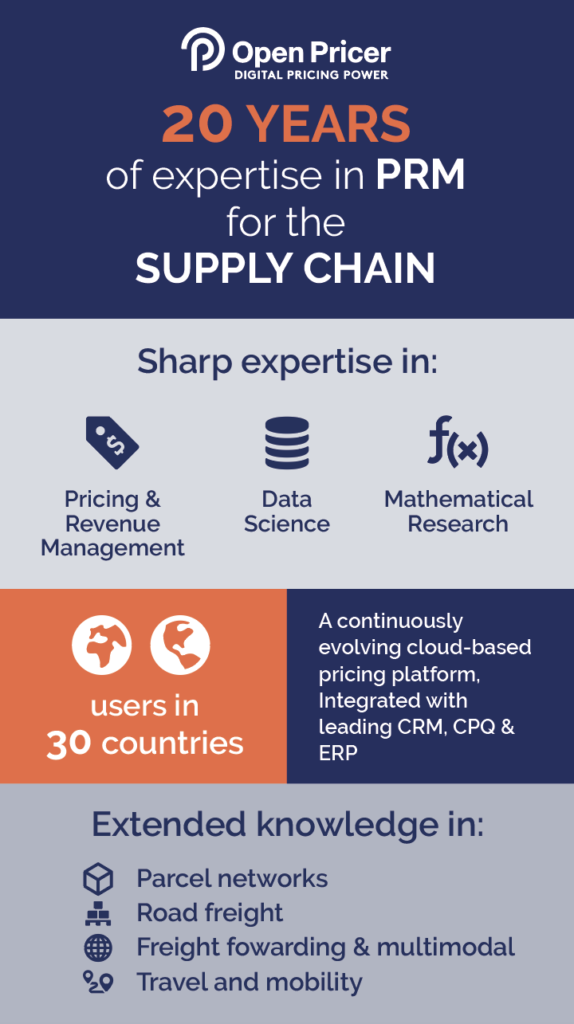
All started 4 decades ago with the first Revenue Management (RM) systems
In 1986 American Airlines introduced the first revenue management system as a competitive weapon against People Express, the low cost carrier that was winning market share with aggressive prices. In a few months the trend was reversed and People Express went bankrupt, unable to react to American Airlines differentiated pricing strategies powered by RM systems. The first wave of revenue management was starting.
Until 2000, RM technology was adopted by most airlines and by other sectors with limited capacity such as hospitality, car rentals, railways, advertising, etc.
Our team participated in this epic, developing the first RM system for Air France and then one of the first RM systems for hospitality, transport and media at Optims, acquired by Amadeus in 2005.
The second wave started in 2000 with the adoption of dynamic pricing
The paradigm of RM is to continuously analyze sales data in order to identify micro-segments of customers with similar price sensitivity and buying behavior so as to dynamically adapt prices to optimize capacity utilization and maximize revenue.
From 2000, RM technology spread to sectors such as retail, e-commerce, manufacturing, financial services and other B2B services thanks to advances in information technology enabling to analyse large volumes of sales data in real-time.
However each sector has its specific pricing structures and challenges, requiring their revenue management and pricing strategies to take into account their specificities.
Our playground is the supply chain
Open Pricer was founded in 2000 with Revenue Management in its DNA and started developing pricing technology for the Supply Chain, i.e. companies shipping goods door-to-door (D2D), from factories and distribution centers to stores, businesses, customers’ facilities, consumers’ homes and Pick-Up and Drop-Off (PUDO) points. Open Pricer decided to address pricing in this industry for our interest in this process’ complexity and because we love the challenge.
Pricing in the Supply Chain has specific challenges:
- Each D2D shipment has multiple transport solutions in terms of itinerary, mode (road, air, rail, sea) and transit time;
- The cost model is complex, involving different processes (pick-up, sorting, consolidation, warehousing, linehaul, delivery) and a variety of cost drivers and multifaceted capacity constraints (weight, volume, loading meters, type and size of containers, pallets);
- Willingness to pay widely varies depending on the customer sector, revenue tier, geography and the value of the goods.
Revenue Management and Dynamic Pricing have become a critical challenge for companies in the Supply Chain.
- Parcel Networks must reinvent their business model and reposition their prices in a context of dramatic increases in e-commerce volumes which have been boosted by the Covid-19 pandemic. In order to invest in additional capacity to handle important increases in traffic, they must achieve profitable growth. Pricing and Revenue Management are essential for their successful transformation.
- Freight Carriers must adapt pricing to the digital era. Shippers need increased reliability and flexibility for managing smaller shipments. They request on-line instant quotations. Experts no longer have the luxury to build quotes over 24-48 hours using spreadsheets.
Open Pricer partners with its clients in the supply chain and helps them to succeed with these transformations. Our pricing and revenue management platform has been improved over the last 20 years to address the specific needs of these verticals. It is flexible, easy to use, and can be integrated with standard or custom software through APIs.
We see the future in green
Open Pricer keeps investing in software development, mathematical research and data science in the field of Pricing and Revenue Management for the supply chain. These are some of the projects we are currently working on:
- Forecasting transport demand versus planned/scheduled capacity and using dynamic pricing to fill empty capacity.
- Predicting the optimal price for spot and contract FTL (Full Truck Loads) depending on origin, destination and time period. This is a very complex problem involving the estimation of demand, price sensitivity, operational costs and the expected location of the fleet at a given point in time.
- Exploring the applicability of our models to people on-demand mobility in urban and suburban areas.
These solutions aim to improve capacity utilisation by up to 20%. They should be major contributors to greener transport.
“We would like to thank the entire team for its continuous commitment as well as our customers and partners for their contribution to our development and success over the past 20 years.” said Daniel Rueda, founder and CEO.
Here are a few facts about Open Pricer, guiding Supply Chain companies towards pricing excellence over the two past decades.

Looking for an experienced partner for your pricing digitalization project ?
